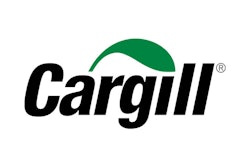Economic activity in the manufacturing sector expanded in August, and the overall economy grew for the 99th consecutive month, say the nation’s supply executives in the latest Manufacturing ISM Report On Business.
Manufacturing expanded in August as the PMI registered 58.8 percent, an increase of 2.5 percentage points from the July reading of 56.3 percent. This indicates growth in manufacturing for the 12th consecutive month and is the highest reading since April 2011, when the index registered 59.1 percent. A reading above 50 percent indicates that the manufacturing economy is generally expanding; below 50 percent indicates that it is generally contracting.
Timothy R. Fiore, CPSM, C.P.M., Chair of the Institute for Supply Management (ISM) Manufacturing Business Survey Committee states, " The past relationship between the PMI and the overall economy indicates that the average PMI for January through August (56.7 percent) corresponds to a 4.2 percent increase in real gross domestic product (GDP) on an annualized basis. In addition, if the PMI for August (58.8 percent) is annualized, it corresponds to a 4.9 percent increase in real GDP annually.”
A PMI above 43.3 percent, over a period of time, generally indicates an expansion of the overall economy. Therefore, the August PMI indicates growth for the 99th consecutive month in the overall economy and the 12th straight month of growth in the manufacturing sector.
Orders, Production and Inventory
ISM’s New Orders Index registered 60.3 percent in August, which is a decrease of 0.1 percentage point when compared to the 60.4 percent reported for July, indicating growth in new orders for the 12th consecutive month.
“Order input continues at a strong pace consistent with the last four months of order activity,” says Fiore. A New Orders Index above 52.3 percent, over time, is generally consistent with an increase in the Census Bureau’s series on manufacturing orders (in constant 2000 dollars).
ISM’s Production Index registered 61 percent in August, which is an increase of 0.4 percentage point when compared to the 60.6 percent reported for July, indicating growth in production for the 12th consecutive month.
“Production remains at strong growth levels in most industries in spite of supplier delivery constraints,” says Fiore. An index above 51.4 percent, over time, is generally consistent with an increase in the Federal Reserve Board’s Industrial Production figures.
The Inventories Index registered 55.5 percent in August, which is an increase of 5.5 percentage points when compared to the 50 percent reported for July, indicating raw materials inventories grew in August compared to July. The index reached its highest level since September 2010, when it registered 56 percent. An Inventories Index greater than 42.9 percent, over time, is generally consistent with expansion in the Bureau of Economic Analysis (BEA) figures on overall manufacturing inventories (in chained 2000 dollars).
ISM’s Backlog of Orders Index registered 57.5 percent in August, an increase of 2.5 percentage points from the 55 percent reported for July, indicating growth in order backlogs for the seventh consecutive month. Of the 90 percent of respondents who reported their backlog of orders, 28 percent reported greater backlogs, 13 percent reported smaller backlogs, and 59 percent reported no change from July.
Exports, Imports and Prices
ISM’s New Export Orders Index registered 55.5 percent in August, a decrease of 2 percentage points when compared to the 57.5 percent reported for July, indicating growth in new export orders for the 18th consecutive month but at a slower rate compared to July.
ISM’s Imports Index registered 54.5 percent in August, a decrease of 1.5 percentage points when compared to the 56 percent reported for July, indicating that imports are growing in August for the seventh consecutive month but at a slower rate compared to July.
The ISM Prices Index registered 62 percent in August, the same rate of growth as July, indicating an increase in raw materials prices for the 18th consecutive month. In August, 30 percent of respondents reported paying higher prices, 6 percent reported paying lower prices, and 64 percent of supply executives reported paying the same prices as in July.
“The Business Survey Committee noted price increases in many areas, including metals (steel and aluminum); food ingredients; electronic components; lumber and wood products; basic chemicals; and plastics,” comments Fiore.
A Prices Index above 52.4 percent, over time, is generally consistent with an increase in the Bureau of Labor Statistics (BLS) Producer Price Index for Intermediate Materials.
Employment
ISM’s Employment Index registered 59.9 percent in August, an increase of 4.7 percentage points when compared to the July reading of 55.2 percent. This indicates growth in employment in August for the 11th consecutive month. Employment levels have been expanding since October 2016 and reached the highest level of expansion since June 2011, when the index registered 61.3 percent.
An Employment Index above 50.5 percent, over time, is generally consistent with an increase in the Bureau of Labor Statistics (BLS) data on manufacturing employment.
The monthly Manufacturing ISM Report on Business is based on the survey results of approximately 350 professionals across 18 different industry sectors. The report is released on the first business day of each month and features the PMI Index as its key measure. For more information on the Institute for Supply Management, visit www.ism.ws.


















